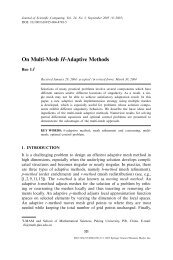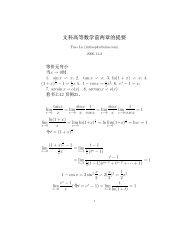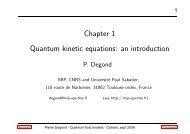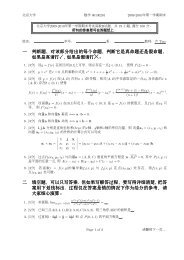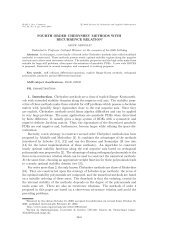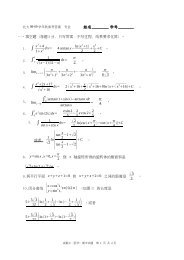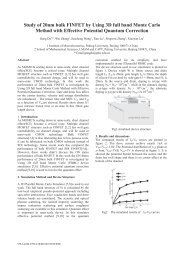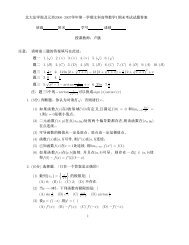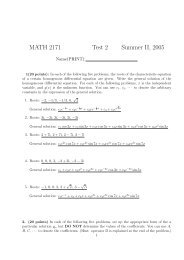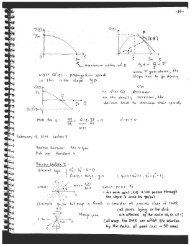Abstract
Abstract
Abstract
Create successful ePaper yourself
Turn your PDF publications into a flip-book with our unique Google optimized e-Paper software.
CHAPTER 1. OVERVIEW 21<br />
1.6 Numerical Solution: Finite Difference Method<br />
There are several discretizations one can use to numerically approximate the PDE as<br />
discussed in the introduction. The method we use is a finite difference method. This<br />
method is used in [8], [40]. The simulator we use is based on a code given to our<br />
research group by the authors of [40]. Here, the k domain is truncated from (−∞, ∞)<br />
to (−Kmax,Kmax), and a grid is placed on the (x,k) space[0,L] × (−Kmax,Kmax).<br />
Finite differences are used for derivative terms and quadrature formulas are used to<br />
compute integrals.<br />
To solve this problem numerically, we begin by discretizing the space and momen-<br />
tum domain. The space domain is divided into Nx equally spaced grid points between<br />
x =0andx = L where the grid points are given by:<br />
xm =(m − 1)∆x, for m =1, 2,...,Nx<br />
L<br />
where ∆x = . To handle the wave number domain, we first truncate the do-<br />
Nx − 1<br />
main to (−Kmax,Kmax), where Kmax is chosen so that for any k such that |k| >K,<br />
we should have that f(x, k) ≈ 0. Here, Kmax =0.25 inverse angstroms, which was<br />
chosen by consulting physicists and looking at different distributions. The truncated<br />
k-domain has Nk equally spaced grid points, with<br />
kj = (2j − Nk − 1)∆k<br />
, for j =1, 2,...,Nk<br />
2<br />
where ∆k = 2Kmax<br />
.Notethatkj∈ (−Kmax,Kmax) for j =1, 2,...,Nk.<br />
Nk<br />
We get an approximation to f at the grid points, and we will denote f(xm,kj) ≈<br />
fmj. For the K(f) term, we use a second-order upwind differencing scheme. So we




